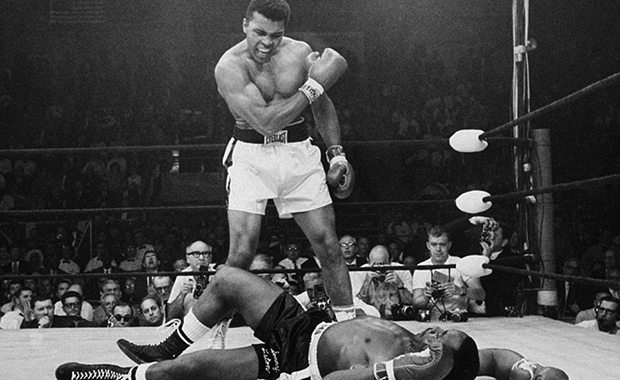Success Advice
3 Simple Ways To Make Better Business Decisions
Business owners and managers always rely on making the right decisions, in terms of following trends and bringing innovative ways to make their business more successful.
But dealing with the process of making decisions and making the right choices, with risks of failure and success factors on the way, is seldom an easy task. Many professionals have problems connected to insecurity and not enough intel to deem confidence and take properly balanced risks when coming up with a decision.
While no one can establish a clear view on the definite outcomes of a decision, one must think ahead in terms of considering the possible ones, and make a quality risk assessments before implementing any decisions.
Decision making guidance serves a linear process compiled of few stages, among which the basic steps are:
- Identify the problem
- Generate alternative solutions
- Evaluate and choose among alternative solutions
- Implement and monitor the chosen solution
But if you consider the decision making process as a linear one, you cannot just stop at the steps above and wonder how to go through with each, without considering a methodology for the decision making.
Here are three simple methods that can provide you with guidance when making a decision:
1. Make a pros and cons sheet
The first way to go through the decision making and elaborate alternatives and outcomes is through the use of a balance sheet. This technique is very useful in problem solving, and I guess decision making and problem solving are interconnected, as they both need to reach an outcome.
What you do is take a simple pen and paper, and draw a line on the middle, making one side free for pros and other for cons. You elaborate why a certain alternative is better or has smaller risks, in comparison to the others, for which you have also made assumptions about. This balance sheet method is a very practical one, and relies on documenting facts and assumptions, and though it may seem too subjective, is a valuable method to support the decision making process.
“As a bull market turns into a bear market, the new pros turn into optimists, hoping and praying the bear market will become a bull and save them. But as the market remains bearish, the optimists become pessimists, quit the profession, and return to their day jobs. This is when the real professional investors re-enter the market.” – Robert Kiyosaki
2. Use the technique six thinking hats
Another decision making methodology is the use of a very stimulating technique, that is called Six Thinking Hats. You can see the more visual interpretation of its description in the mind map below.
The six thinking hats technique, encompasses a way to introduce six ways to look at things: facts, feelings, process, creativity, benefits and cautions, and they are all represented by six different colors for a more stimulating effect.
While “wearing” each hat, the person looks at the decision from different perspectives, giving a variety in the choosing, but a way to stimulate the risk assessment and the scores of possible outcomes.
The white hat is the objective view on the situation and relies only on facts, data and figures, without considering subjective thinking or emotions. The blue hat signifies control of the process and is used to manage the thinking process by observing guidelines of the process.
The red hat marks feelings and relies on intuition, and places emotions without explanation. The green hat is focused on creativity and freshness of ideas and induces lateral thinking. The yellow hat symbolizes the optimistic side of looking onto outcomes and explores the positive values and benefits of the situation. The black hat is the critical thinking hat where the risks and negative sides are being considered.
3. Mind mapping
I am a fan of new concepts and frequently incorporate another famous technique into the decision making process, called mind mapping.
Mind mapping is a visual technique to organize ideas and information. The product of mind mapping is called a mind map and is nothing else that a specific diagram, representing a central topic branching out to subtopics that elaborate the central subject, in this case a problem or a decision to be made. This tool is used to generate, visualize and structure ideas and aids decision making and problem solving, by being able to see the big picture.
“Many think of memory as rote learning, a linear stuffing of the brain with facts, where understanding is irrelevant. When you teach it properly, with imagination and association, understanding becomes a part of it.” – Tony Buzan
Since we cannot surmise all advices or tips to take into account when delivering any decision, or when you go through the decision making process, but you can take into account some of the following:
- Make sure you are sufficiently informed and put aside any conflicts of interest;
- Value information and document it in any form as evidence;
- Take account of all relevant factors and ignore any irrelevant ones;
- Always think through actions that are within your powers and try to act upon them;
- And last but not least – make decisions that are within your range.
How do you make important decisions? Please leave your thoughts in the comment section below!
Image courtesy of Twenty20.com
Did You Know
How Skilled Migrants Are Building Successful Careers After Moving Countries
Behind every successful skilled migrant career is a mix of resilience, strategy, and navigating systems built for locals.

Moving to a new country for work is exciting, but it can also be unnerving. Skilled migrants leave behind familiar systems, networks, and support to pursue better job opportunities and a better future for their families. (more…)
Life
10 Research-Backed Steps to Create Real Change This New Year
This New Year could finally be the one where you break old patterns and create real, lasting change.

Every New Year, we make plans and set goals, but often repeat old patterns. (more…)
Change Your Mindset
The Silent Skill That Makes People Respect You Instantly
What truly earns respect and why most people go about it the wrong way

Everybody craves respect but not everyone earns it. Some people believe that a title, years of experience, or a position of authority automatically entitles them to respect. (more…)
Entrepreneurs
The Essential Skills Every Entrepreneur Needs In 2026
Success in the digital age isn’t about luck. It’s about mastering the skills that separate dreamers from doers.

When I was 22 years old, I started my first side hustle as a ghostwriter. (more…)
-

 Shift Your Mindset4 weeks ago
Shift Your Mindset4 weeks ago11 E’s That Define Every Great Leader And Why Most People Miss Them
-

 Did You Know3 weeks ago
Did You Know3 weeks agoThe Success Patterns You Inherited (And Didn’t Notice)
-

 Entrepreneurs3 weeks ago
Entrepreneurs3 weeks agoThe Essential Skills Every Entrepreneur Needs In 2026
-

 Business4 weeks ago
Business4 weeks agoThe Hidden Money Pit in Your Operations (and How to Use It)
-

 Change Your Mindset2 weeks ago
Change Your Mindset2 weeks agoHow to Turn Your Mind Into Your Greatest Asset (Instead of Your Enemy)
-

 Change Your Mindset2 weeks ago
Change Your Mindset2 weeks agoThe Silent Skill That Makes People Respect You Instantly
-

 Life1 week ago
Life1 week ago10 Research-Backed Steps to Create Real Change This New Year
-

 Tech1 week ago
Tech1 week agoWhat’s in a Name? How to Get Your Domain Right




















2 Comments